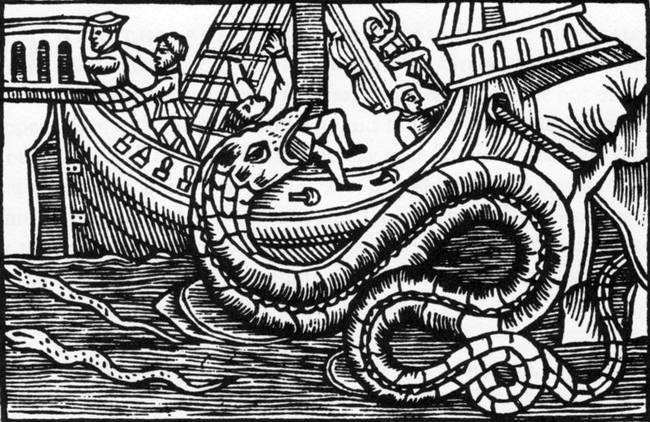Why You See All Those Sea Monsters On Old Pirate Maps
by N/A, 10 years ago |
1 min read
|
3794
While most of these creatures were probably just dolphins or whales or seals, to the pirates that encountered them, they were often fearsome creatures.
1603: The Steipereidur

Abraham Ortelius first published a map with this creature on it. The whale-like creature may look terrifying, but it actually fights off more dangerous animals and monsters and helps save fishermen.
1555: The Sea Serpent

The Sea Serpent started out as a Norwegian myth, and was the first incarnation of what we now think of as the Loch Ness Monster.
1621: Jasconius

St. Brendan claimed to have landed on the back of this aquatic beast, but noticed its scales and realized he wasn't on the island he thought he was.
1573: The Sea Eagle

The Sea Eagle was likely what we now know as a sting ray. The mythical creature was thought to have a large reward if you were able to catch one and deliver it to a king.
1572: Sea Chimera

The Sea Chimera looks as if it has a serpent's tail on fire, and a bird-like face with feathers that release smoke.
1570: Mermaids

Mermaid sightings were incredibly common among men on ships. These men probably hadn't seen women in quite a long time, so it makes sense they would think they see women in the sea.
1560: Cherub Seals

Cherub Seals are terrifying large seals with child-like faces. Even more terrifying though, are the Ziphius who hunted them.
1101: Elephant Fish

In Switzerland, it was believed that every animal on land had a counterpart that lived in the sea.
1250: The Kraken

Possibly the most famous sea monster, it is believed to have left a very dangerous whirlpool in its wake.
1554: Sea Bishop

It was believed there was a kingdom of Catholic mermaids that lived underwater at this time. The period had a lot of religious tension, so many monsters from the time had connections to clergymen.
1539: The Sea Swine

The Sea Swine was thought to live in the North Sea above Germany and it had sharp tusks, dragon's feet and several eyes all over its body.
1539: Sea Rhino

The Sea Rhino was allegedly 12 feet long and would eat giant lobsters.
1567: The Sea Camel

By this time in map making, the more mythological beasts on a map, the better it sold. In the case of the Sea Camel, it wasn't based on any particular animal sighting, but people just liked the way it looked.
✕
Do not show me this again
